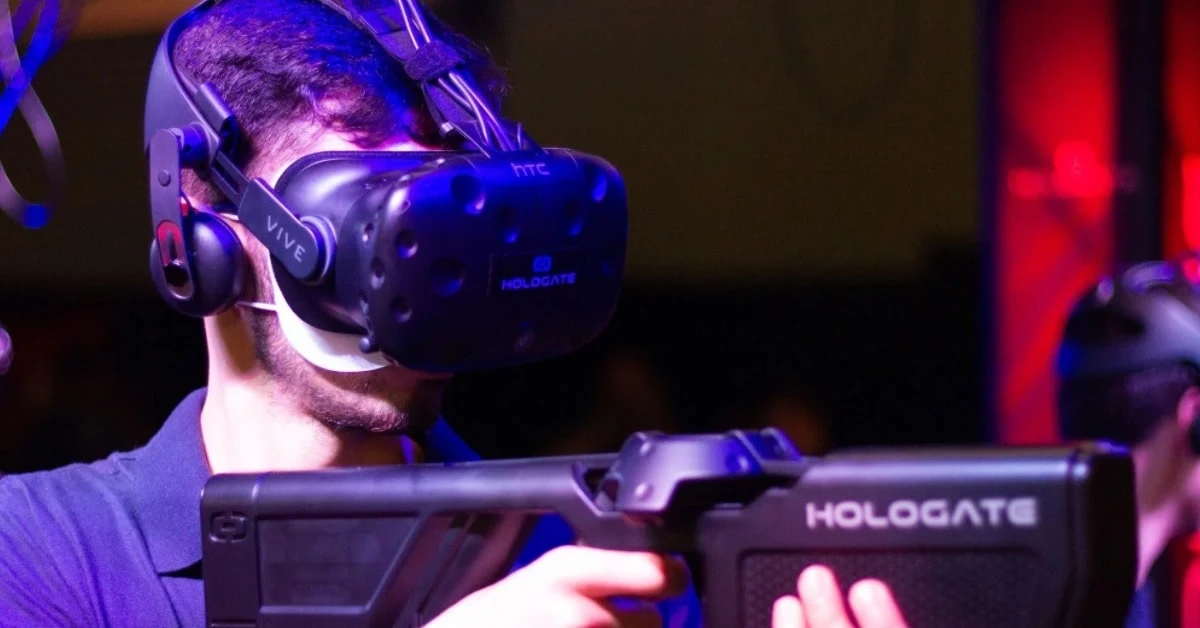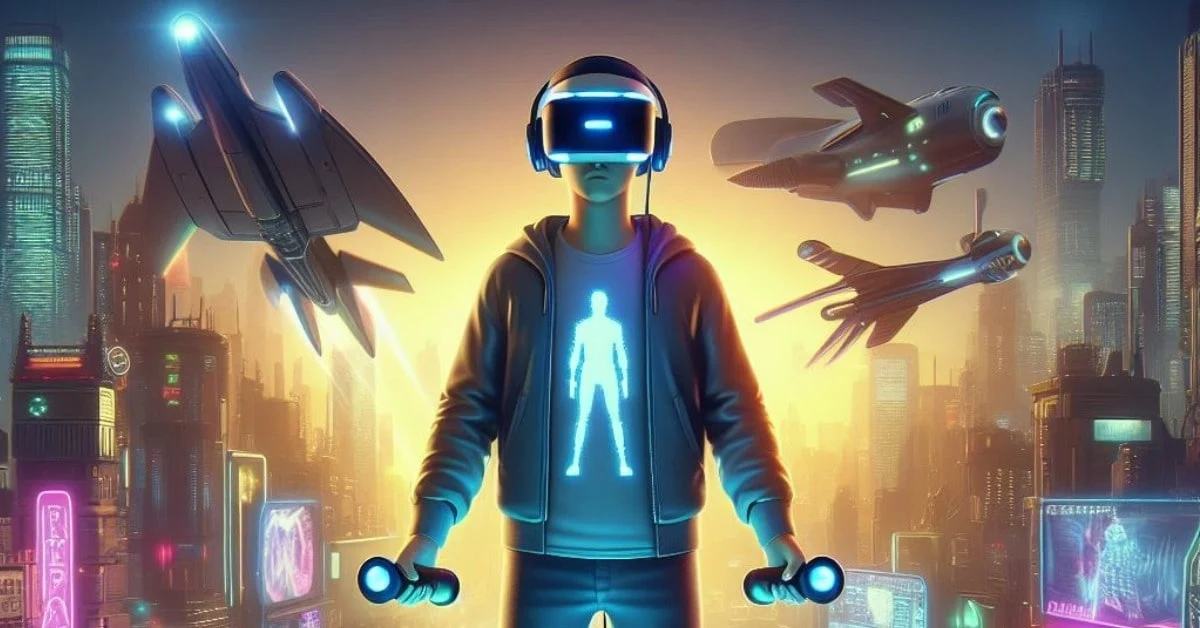Sandbox VR is a futuristic virtual reality gaming experience that allows groups of up to six friends to transport themselves into their own action movie and roam freely together in VR space, exploring unique virtual worlds and relying on each other to succeed in specially designed social games. experiences. Sandbox VR combines full-body motion capture and high-quality haptics to deliver unprecedented realism and full immersion not possible with home VR systems or other location-based VR platforms. The unique worlds of Sandbox VR are built by EA, Sony and Ubisoft veterans and are inspired by Star Trek's holodeck. The experience is designed to make you feel like you're living in a game or movie. Sandbox VR has locations in several countries, including Singapore, the United States, and the United Kingdom.
 |
| Photo credit : Canva |
Sandbox VR offers a variety of games designed to provide social experiences and complete immersion. Here are some popular games in Sandbox VR:
Deadwood Mansion: A horror themed game where players have to solve puzzles and escape from a haunted mansion.
Amber Sky 2088: A sci-fi game where players work together to save humanity from an alien invasion.
Star Trek: Discovery - Away Mission: A Star Trek themed game where players have to explore a mysterious planet and complete a mission.
The Curse of Davy Jones: A pirate-themed game where players must find treasure and escape from a cursed ship.
The Dragon Tower: A fantasy themed game where players have to climb a tower and defeat a dragon.
These games are designed to be played with a group of friends and are perfect for team-building events, birthday parties, or a fun night out. The duration of each game in Sandbox VR depends on the game you choose. However, most games last between 30 and 45 minutes. You don't need to bring any equipment or gear to play in Sandbox VR. All necessary equipment, including backpack computers, motion sensors and haptic vests, will be provided by Sandbox VR. The cost to play in Sandbox VR varies depending on the location and game you choose. According to their website, the price per person for a 30-minute session ranges from $24.99 to $44.99 for single-player packages and $34.99 to $54.99 per person for multiplayer packages. However, prices may vary depending on the location you choose and the specific game.
 |
| Virtual Reality (VR) |
Virtual reality (VR) is a technology that creates a realistic and immersive experience of a virtual world. VR applications immerse the user in a three-dimensional (3-D) visual or other sensory environment, allowing them to interact with an artificial environment that mimics reality. VR technology uses posture tracking and 3D near-eye displays to give the user an immersive experience of a virtual world. Applications of virtual reality include entertainment (especially video games), education (such as medical or military training), and business (such as virtual meetings).
VR headsets like the Oculus Rift and PlayStation VR are often referred to as HMDs, meaning they are head-mounted displays. Head tracking means that when you wear a VR headset, the image in front of you changes as you look up, down and to the side or at an angle. Motion tracking and eye tracking are other features used to enhance the VR experience.
The goal of VR is to create a life-sized, 3D virtual environment without the boundaries we normally associate with TV or computer screens. So no matter which way you look, your face-mounted screen follows you. This differs from augmented reality, which overlays graphics onto your view of the real world.
 |
| Augmented Reality (AR) |
Augmented reality (AR) and virtual reality (VR) are two different concepts of reality-shifting technology that can be used for different purposes. AR adds to your vision, while VR replaces it. AR devices like Microsoft HoloLens, the original Google Glass, and various enterprise-level "smart glasses" are transparent, allowing you to see everything in front of you as if you were wearing a pair of clear glasses. The technology is designed for freedom of movement while projecting images onto everything you see. This concept extends to smartphones with AR apps and games, like Pokemon Go, which use your phone's camera to track your surroundings and visually overlay additional information on top of it.
On the other hand, VR headsets like Oculus Rift and PlayStation VR are often referred to as HMDs, meaning they are head-mounted displays. Head tracking means that when you wear a VR headset, the image in front of you changes as you look up, down and to the side or at an angle. Motion tracking and eye tracking are other features used to enhance the VR experience.
The goal of VR is to create a life-sized, 3D virtual environment without the boundaries we normally associate with TV or computer screens. So no matter which way you look, your face-mounted screen follows you. This differs from augmented reality, which overlays graphics onto your view of the real world.
-min.jpeg) |
| Photo Credit : Canva |
You can use your phone for augmented reality. Many smartphones today come with built-in AR capabilities and there are also many AR apps available for download in app stores. AR apps use your phone's camera and sensors to overlay digital content onto the real world, allowing you to interact with virtual objects and environments. AR applications that are widely used include IKEA Place, Snapchat, and Pokemon Go. If you are interested in exploring more AR apps, you can check the app store on your phone or visit websites that offer AR experiences.


